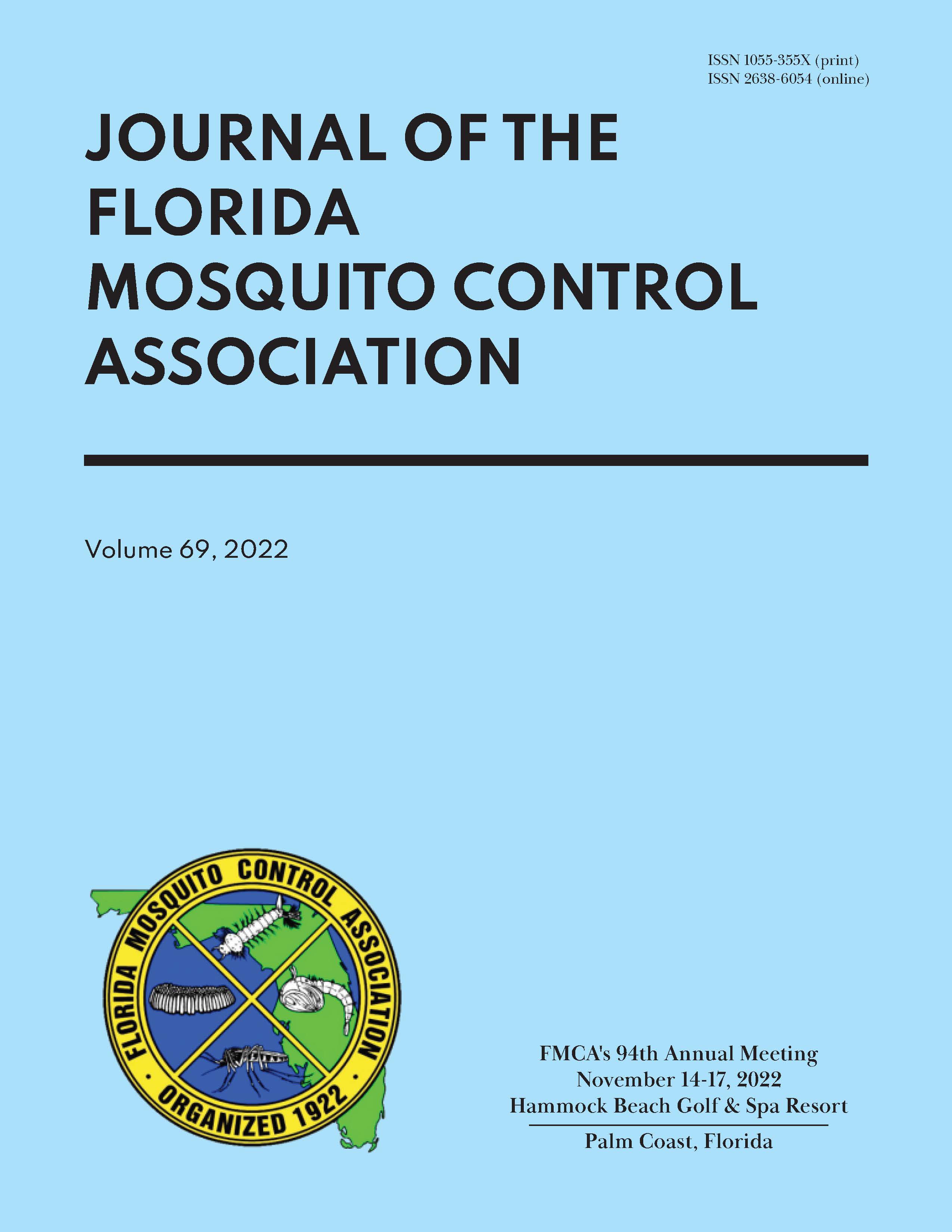EVALUATION OF POTENTIAL SPATIAL REPELLENCY OF CONTACT REPELLENTS AGAINST AEDES AEGYPTI (L.) IN A WIND TUNNEL
DOI:
https://doi.org/10.32473/jfmca.v69i1.130637Keywords:
repellency, irradiated mosquitoes, SIT, topical repellents, personal protectionAbstract
The use of arthropod repellents is an important personal protective measure against vector-borne diseases. For contact repellents, the recommendation to apply repellents to all exposed skin could be relaxed if the repellent exhibits spatial repellency. In 2019, we evaluated four contact repellents containing a mixture of geraniol and soybean natural oils, N,N-diethyl- 3-methyl-benzamide (DEET), 2-(2hydroxyethyl)-1-piperidine carboxylic acid 1-methylpropyl ester (Picaridin), and p-Menthane-3,8-diol (PMD) for their potential as spatial repellents against cohorts of irradiated and non-irradiated laboratory reared Aedes aegypti (L.) and irradiated Ae. aegypti females exposed to a radiation dose sufficient to sterilize (50 Gy). Evaluations were conducted in a modular wind tunnel, which provided mosquitoes the option to move within 15 minutes to the repellent side containing a repellent or to an attractant side containing BG lure. Mosquitoes on each side were counted and percent calculated based on the number of mosquitoes released for each test. The repellent containing PMD had significantly more non-irradiated mosquitoes on the attractant side than on the repellent side, indicating that it repelled non-irradiated mosquitoes. Picaridin had significantly more irradiated mosquitoes on the attractant side than on the repellent side indicating that it repelled irradiated mosquitoes. A minor change in behavior of irradiated and non-irradiated mosquitoes by these repellents can only create a false sense of protection. These results emphasize to strongly follow available guidance that the contact repellents tested in this study should be applied to all exposed skin.


